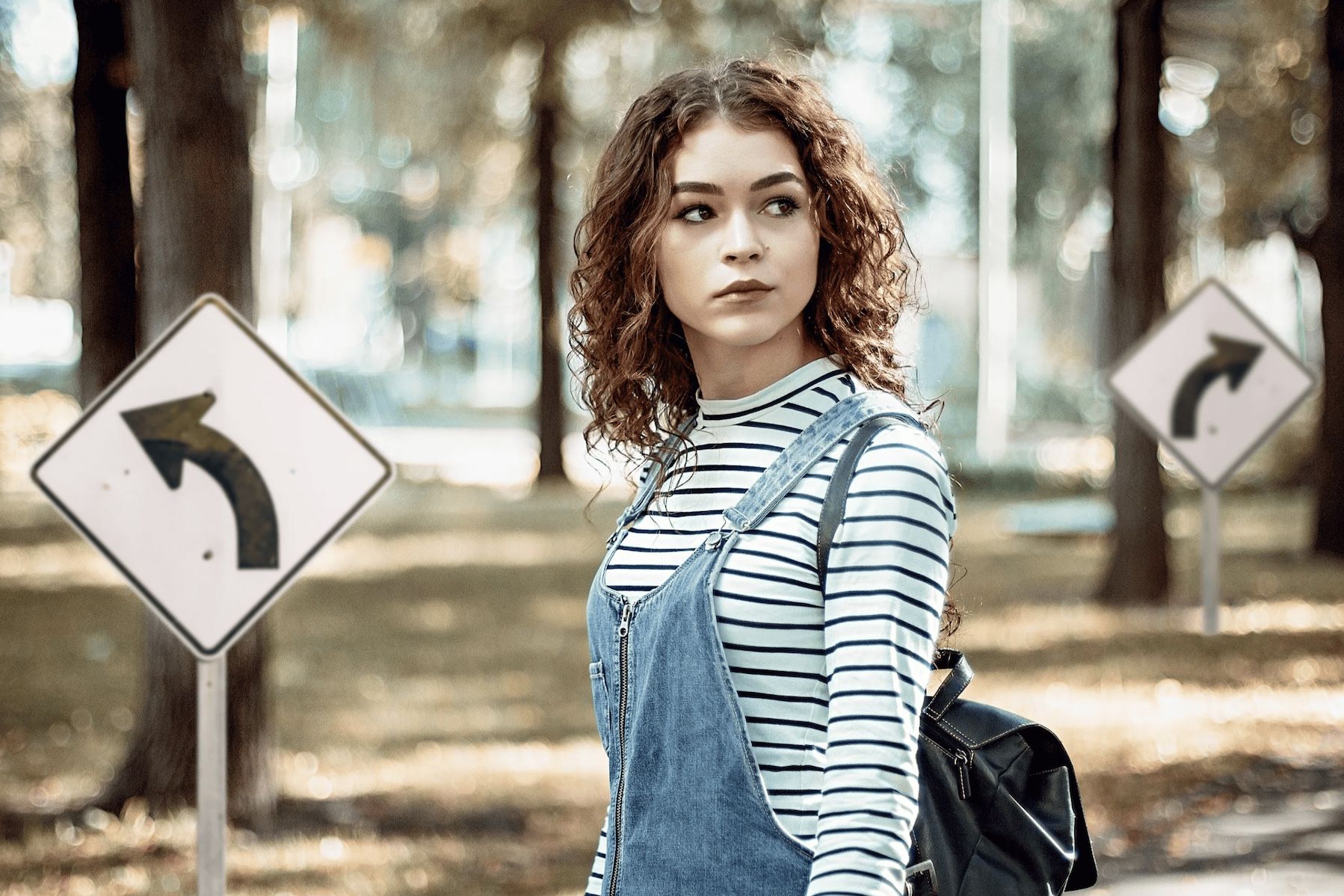 ↑ Photo of signs by Rachel Claire, photo of girl by Photo by Jonas Svidras from Pexels; images combined by Ellane.
↑ Photo of signs by Rachel Claire, photo of girl by Photo by Jonas Svidras from Pexels; images combined by Ellane.
When I was in high school, I left my guitar on the school bus. Twice.
I’ll tell you the rest of the story in a moment, but first let me point out that this never would have happened if I’d known about about the role of mindfulness in keeping the wheels of a productive life well-oiled, and turning smoothly on the right track.
This article is about how I learned to save time and be more productive in the physical and digital worlds by doing one simple thing: being mindful of my surroundings. It’s a foundational habit I call Say Goodbye To Your Chair (SGTYC).
It’s one of those simple, commonsense things that can poke large holes in your productivity when it’s overlooked.
Back to the guitar story.
Lessons on the instrument of our choice were part of the school day, so one day a week I’d bring it with me, then take it home again to practice.
How could I forget something so large? So costly? Quite easily, apparently!
While travelling I’d be immersed in the book I was reading, the homework I was trying to memorise for an up-coming test, or any of the other things adolescents think and worry about at the end of a school day. Four days of the school week there was no need to check the luggage rack when my stop came, so there was no autopilot for the fifth day.
Fortunately for my mother’s budget and my musical education, I got the guitar back each time — after harried phone calls and anxious drives into the lost and found. That it wasn’t stolen was sheer luck!
Epilogue: I wasn’t so lucky with my prize set of 72 Derwent pencils. That was hard. I enjoyed art a lot more than music in those days.
Right, that’s the tale. Now for the takeaway. The rule, if you will.
Whenever you’re leaving one environment for another, turn around and say goodbye to your chair.
In other words, turn around and spend a moment looking back at where you’ve just been, to see if there’s anything you need to pick up and bring to where you’re going next.
This means training yourself to do more than pick up your bag and walk out of a room when it’s time to leave. You’ll pick up your bag then make yourself turn back to the space you’re leaving and effectively say “goodbye” to it.
Turning around and looking at the space you were in is great, but it’s not always going to be enough. Sometimes you need to dig a little deeper.
When SGTYC is a habit —
Turning around on music lesson days to check the spaces I couldn’t quite see would have helped me remember to pick up my guitar from the luggage rack, but a once-a-week repetition of that habit was never going to be enough.
You can’t know when your phone will slip out of your pocket, or when you’re going to be so distracted that you’ll forget it was music lesson day.
The power of this habit lies in doing it even when you think you don’t need to.
Because, after all, it’s the times you don’t realise you need it that you’ll need it the most.
The Saying Goodbye to Your Chair principle applies to more than your physical environment.
Are you in the habit of keeping a Daily Note (what I call a Captain’s Log) or doing weekly or monthly reviews? I’ve written in detail about how I do this, here.
This is the SGTYC principle in action. By doing this you are, in effect, looking behind you to see what’s worth writing down for your future self (ie. what’s worth bringing with you) before moving to another space.
Interstitial journalling isn’t something I do on the micro-level I’ve seen in some people’s productivity practices. I don’t make a note every time I move on to another activity, though I do write a brief summary of my day in the daily note I keep in Obsidian, which is a form of SGTYC. Or SGTMD (Saying Goodbye To My Day).
The PARA method of organising digital files encourages the SGTYC principle. When a project is complete, there may be documents that should go back in your Resources folder — not into the Archive folder with the rest of the completed project docs.
I recommend writing a brief summary of any completed project before it’s archived, using these points, or any others that make sense to you.
The Say Goodbye To Your Chair principle is something I taught my (now adult) children, which they are passing on to the next generation.
It’s super obvious, I know! But many people neglect it so I’ll say it again:
Turn around and spend a moment looking back at where you’ve just been, to see if there’s anything you need to pick up and bring with you.
This mindfulness principle applies to both the physical and digital worlds, and ignoring it will (eventually) negatively impact your productivity and, by extension, your life.
It’s a small but powerful way of preparing for the future by making sure nothing important gets left behind.
 Is Touch Typing Irrelevant in a Voice-to-Text World?
Is Touch Typing Irrelevant in a Voice-to-Text World?
 Don’t Go Fully Paperless if You Hope to Leave a Lasting Legacy
Don’t Go Fully Paperless if You Hope to Leave a Lasting Legacy